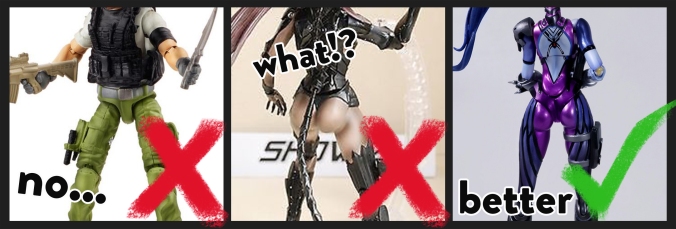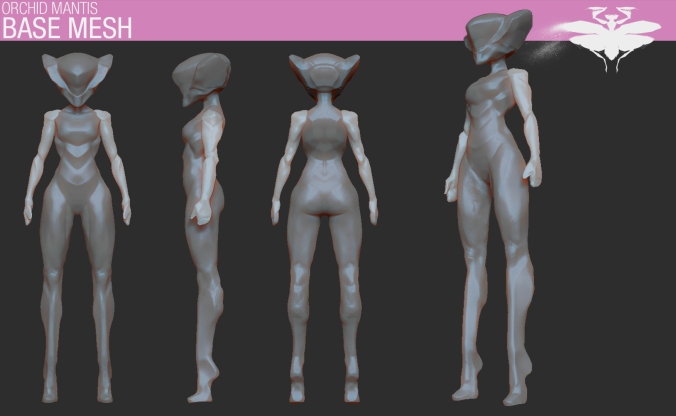These past two week have been the start of my stricter working schedule, and it has been working well so far. I gave myself the task of making a more final version of the hip joint, working on a single piece each day. This joint was designed and redesigned several times, and I could never find a version that really satisfied me. As I’ve said before in this blog, hips are possibly the single most difficult joint to get right. Initially, I may have had a joint that looked great standing and moving forward and back, but moving sideways was incredibly awkward. It took a lot of trial and error to find a solution that looked right from every angle and bend.
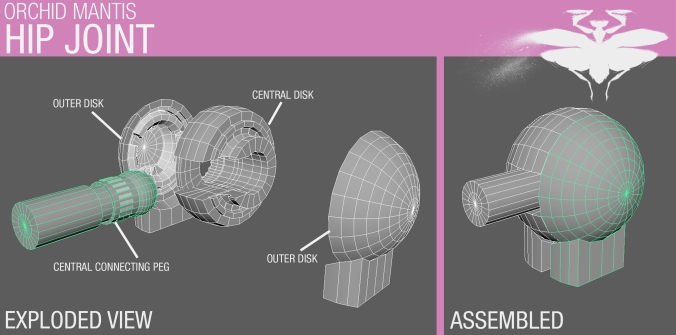
The solution I’ve arrived at is a spherical joint making up the hip/top of the butt, with the surrounding leg rotating revolving around the sphere. The hip area has a ring the sphere sits in that rotates freely in the socket, covering any gaps that might otherwise appear from the joint. The joint itself has gone through so many design changes I’ve lost count at this point. I had been using a more common sphere joint, but since they would be sitting so close together within the hip section, there was no room to securely attach any pins coming out from the joint, or I would have had to point the pins upward, which would make moving and posing an awkward task. Instead, I opted to find a way to put a pin from the pelvis into the joint. It took a fair amount of engineering, since the joint has to rotate around this pin on two axis without getting in the way. What I’ve arrived at is a central disk that sits snugly on the pin and rotates on one axis, and then two outer sections that make up the rest of the sphere rotating on the other axis around this disk. This design seems a little overly-complicated to me, but as far as I can see, it was the only way to get the look I wanted with any degree of structural integrity.
Instead, I opted to find a way to put a pin from the pelvis into the joint. It took a fair amount of engineering, since the joint has to rotate around this pin on two axis without getting in the way. What I’ve arrived at is a central disk that sits snugly on the pin and rotates on one axis, and then two outer sections that make up the rest of the sphere rotating on the other axis around this disk. This design seems a little overly-complicated to me, but as far as I can see, it was the only way to get the look I wanted with any degree of structural integrity.
I’m currently fixing the knee to a print-ready form. As soon as that’s done, I’ll be prototyping a full leg, from hips to ankles.
Updated Concept
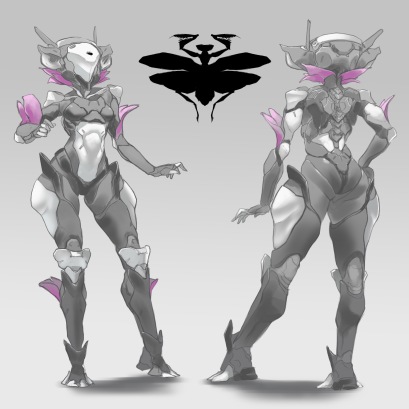
I have some new concept art to follow for this piece. The longer this project goes on, the more outdated the original pieces feel. The design is largely the same, with some changes primarily to the legs and helmet. The original had these large plates on the front of the thighs that were getting in the way of the rest of the leg with articulation and holster functions. At first I liked the way they looked from the side, but the more I stared at them, the more they felt like a weak point in the design.
The same sentiments apply to the helmet. I still liked the original design, but the shapes just needed to be pushed a little more, mostly around the eyes. When building this in 3D, the shape of the eyes wasn’t making a lot of sense. Once again, the more I redraw the helmet, the more the design gets pushed towards something I’m really liking.
Finally, the first design also had these coattail elements around the back. I lost them in the drawing for the sake of seeing the rest of the design better. I’m on the fence about putting them again. I like the design both ways. I’ll probably give it a few weeks and see how I feel about it.
Summary
With the hip complete and a few updates to the earlier geared knee design, the leg is nearing completion. I’m still testing a few designs for the knee pad. My initial idea was to have a two-piece knee pad that slides when the knee bends. That is still very much a possibility, I’m just trying to find a way to do it with the fewest moving parts.
In the next week or so I plan to start prototyping the leg and hip area. As I move on to the rest of the body and finish designing the structures there, I’ll prototype those parts to fit with current prototypes, eventually building out a full prototype body. Something like this really helps to see not only what the final product will look like, but also how all the articulation works together and the range of poses it will be capable of. Seeing it on the computer is great, but a physical product is always better for me.
For my tasks in the next week or two, I’ll be putting the finishing touches on the knee and moving onto a prototype ready design for the shoulder/upper torso area. The current version works well already, so the main design challenges are to make it more compact and clean it up a little. Once that’s finished and printed, I will have a mostly complete prototype body.
-Nick
 Most recently, I spent some time prototyping the arm blade. This is probably the single most redesigned piece of the entire figure. I posted some concept art a while back thinking I had a design I liked, but just days after it went up, I had my doubts about it. I went all the way back to the idea stage. I realized I was being way too safe with my design, and was worried anything really cool would be difficult to make. But, if it’s worth doing, might as well do it right or not at all. What I do have still isn’t finished, but it’s heading in the right direction. I’m picturing something where the whole forearm spreads out into this big, intimidating blade display. It’s difficult to get everything packed into such a small form, but I’m
Most recently, I spent some time prototyping the arm blade. This is probably the single most redesigned piece of the entire figure. I posted some concept art a while back thinking I had a design I liked, but just days after it went up, I had my doubts about it. I went all the way back to the idea stage. I realized I was being way too safe with my design, and was worried anything really cool would be difficult to make. But, if it’s worth doing, might as well do it right or not at all. What I do have still isn’t finished, but it’s heading in the right direction. I’m picturing something where the whole forearm spreads out into this big, intimidating blade display. It’s difficult to get everything packed into such a small form, but I’m 
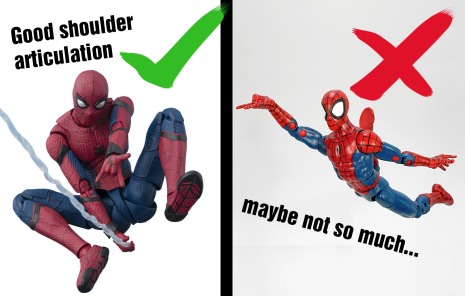
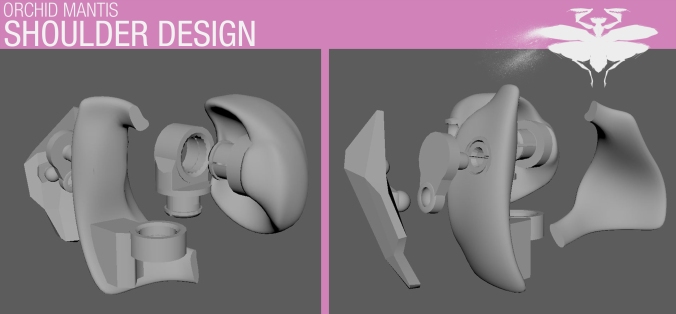


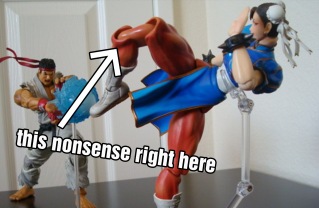
 I had gone through a few different versions of implementing this idea. The last had exposed teeth on the joint, and although it was simpler, I hated the idea of being able to see the inner workings of a detail that should be invisible. Currently, it’s fairly similar to many of the double joints other figures use, just hollowed out to make room for the teeth on the inside. I will most likely be prototyping this piece next. I plan on trying a few different gear ratios. Right now it’s set up for two gears of the same size, but I think one large and one small gear may actually give a more realistic result. Looking at the way a knee bends, the kneecap appears to stay in line much more with the shin than the thigh. To achieve this effect, I think I’ll need a small gear for the top joint and a larger one for the bottom. More to come as this develops.
I had gone through a few different versions of implementing this idea. The last had exposed teeth on the joint, and although it was simpler, I hated the idea of being able to see the inner workings of a detail that should be invisible. Currently, it’s fairly similar to many of the double joints other figures use, just hollowed out to make room for the teeth on the inside. I will most likely be prototyping this piece next. I plan on trying a few different gear ratios. Right now it’s set up for two gears of the same size, but I think one large and one small gear may actually give a more realistic result. Looking at the way a knee bends, the kneecap appears to stay in line much more with the shin than the thigh. To achieve this effect, I think I’ll need a small gear for the top joint and a larger one for the bottom. More to come as this develops.
